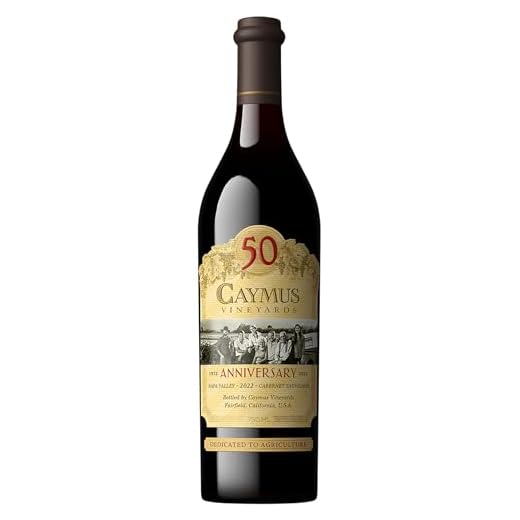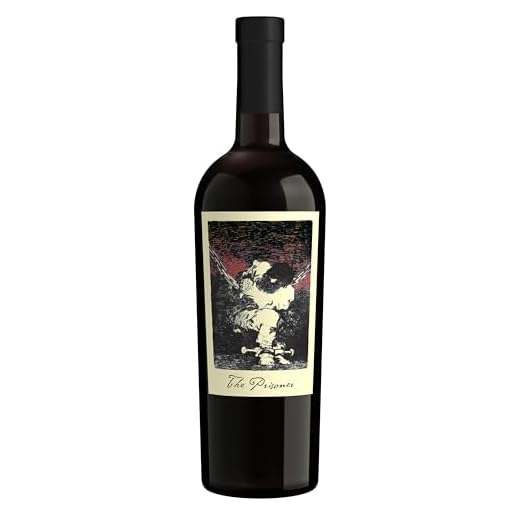



For those seeking a drier experience, consider choosing varietals like Cabernet Sauvignon or Pinot Noir. These options typically contain around 0.1 to 0.5 grams of residual carbohydrates per glass. This low carb content makes them ideal for individuals mindful of their sugar intake.
Another excellent choice is Malbec, known for its bold flavors while maintaining a low sweetness level. With similar carbohydrate levels to Cabernet Sauvignon, it offers a satisfying taste without the extra sugar. Opting for these wines not only enhances your dining experience but also aligns with a healthier lifestyle.
For an adventurous selection, explore the realm of Sangiovese. This Italian grape variety often exhibits a delightful balance of acidity and structure, making it a fantastic low-sugar option. With carbohydrate counts comparable to the aforementioned varietals, Sangiovese can elevate your palate while keeping sugar levels in check.
By focusing on these selections, you can enjoy the rich and complex flavors of darker varietals without compromising your dietary goals. Cheers to making informed choices while savoring every sip!
Choosing Low Residual Sweetness Options
For those seeking options with minimal residual sweetness, consider varietals like Pinot Noir, Cabernet Sauvignon, and Merlot. These selections typically exhibit lower sugar content, especially when sourced from regions known for drier climates.
Pinot Noir Recommendations
Opt for Pinot Noir from regions such as Burgundy or Oregon. These areas produce wines that often showcase bright acidity and fruit-forward flavors without excessive sweetness. Look for terms like “dry” or “minimal residual sugar” on the label.
Cabernet Sauvignon and Merlot Insights
Cabernet Sauvignon from Napa Valley or Bordeaux can be excellent choices. These wines often have a robust profile while maintaining low sugar levels. Similarly, Merlot from the right producers can be balanced and dry. Always check for the alcohol content; higher levels often correlate with lower sugar.
When selecting, remember to inquire about the specific brands or producers known for their commitment to crafting dry options. This approach will enhance your experience and ensure satisfaction with your choices.
Identifying Low-Sugar Red Wine Varieties
To find exceptional options with minimal sweetness, I recommend focusing on specific grape types that naturally produce wines with lower residual sweetness. Consider varieties like Cabernet Sauvignon, Syrah, and Merlot, which often exhibit bolder flavors without high sugar content. These selections typically undergo full fermentation, leaving less sugar in the finished product.
Top Grape Varieties
Here are some grape varieties that consistently yield lower sugar levels:
| Grape Variety | Characteristics |
|---|---|
| Cabernet Sauvignon | Bold tannins, dark fruit flavors, often dry. |
| Syrah/Shiraz | Spicy notes, dark berries, typically low residual sugar. |
| Merlot | Soft tannins, rich fruit, can be found in dry styles. |
| Pinot Noir | Lighter body, fresh red fruit, often dry. |
| Malbec | Rich flavors, dark fruit, commonly produced in dry styles. |
Wine Regions to Explore
Regions known for producing drier selections include Bordeaux, Napa Valley, and the Rhône Valley. Exploring wines from these areas will enhance your chances of finding bottles with low residual sweetness. Always check the label for indications of dryness or look for terms like “brut” or “sec,” which suggest lower sugar levels.
Understanding Labels: How to Read Wine Nutrition Facts
Check the label for residual content, which indicates the amount of sweetness present. Look for terms like “dry” or “no added sugar” to guide your selection. A standard serving typically contains around 5 ounces, providing a basis for evaluating nutritional information.
Consider the following aspects when reading labels:
- Alcohol by Volume (ABV): Higher alcohol levels often correlate with lower sweetness, as fermentation converts more sugars into alcohol.
- Calories: A lower calorie count usually suggests reduced sweetness. Most low-calorie options contain under 100 calories per serving.
- Serving Size: Always check serving sizes; nutritional facts can be misleading if not compared proportionately.
Use the following tips to better understand what you are consuming:
- Look for varietals known for their drier profiles, such as Cabernet Sauvignon or Merlot.
- Explore regions with cooler climates, as these often produce grapes with higher acidity and lower residual sweetness.
- Familiarize yourself with common descriptors; terms like “full-bodied” may imply a richer flavor profile without excessive residual content.
By paying attention to these details, you can make informed choices and discover options that align with your taste preferences while keeping sugar intake in check.
Comparing Sugar Content in Popular Red Wine Brands
For those seeking options with minimal residual sweetness, consider brands such as Dry Farm Wines, known for its low sugar levels across various varietals. Another excellent choice is the 2019 Château de Pizay Beaujolais, which showcases fruit without excess saccharine qualities, typically falling below 1 gram per liter.
In the realm of Californian selections, look at the 2018 Stag’s Leap Artemis Cabernet Sauvignon, where sugar content remains impressively low, often around 0.4 grams per liter. This wine exemplifies how complexity can exist without added sweetness.
European choices also stand out; the 2020 Domaine Tempier Bandol offers a robust profile with restrained sugars. A glass may reveal just about 0.5 grams per liter while maintaining an expressive character that pleases the palate.
When exploring options from South America, the 2017 Concha y Toro Casillero del Diablo Reserva Privada delivers flavor with minimal sweetness, generally under 1 gram per liter. It’s a fantastic example of balance and approachability.
For those who appreciate blends, the 2018 The Prisoner Red Blend from California often registers low sugar levels while providing a rich tapestry of flavors, typically around 1 gram per liter, making it a delightful option for many occasions.
Being informed about these selections allows for better choices when seeking wines that align with dietary preferences. Pay attention to vineyard notes, as they can provide insight into the sugar content and overall quality of the bottle.
Exploring the Role of Fermentation in Sugar Levels
The fermentation process plays a pivotal role in determining the residual sweetness of a beverage. During fermentation, yeast consumes the natural sugars found in grapes, converting them into alcohol and carbon dioxide. The extent of this conversion is influenced by several factors, including yeast strain, fermentation temperature, and duration.
Yeast Strains and Their Impact
Different yeast strains exhibit varying levels of sugar consumption. Some strains are more efficient at fermenting sugars, leading to lower residual sweetness. For instance, certain strains used in dry fermentations can leave behind minimal sugars, resulting in a drier profile. Choosing wines crafted with these specific yeast strains can be advantageous for those seeking lower sugar content.
Temperature and Fermentation Duration
Higher fermentation temperatures generally expedite the yeast’s activity, facilitating a more complete conversion of sugars. Conversely, cooler temperatures may slow down fermentation, potentially leaving more residual sugar. Additionally, the length of fermentation can affect sugar levels. Extended fermentation periods allow yeast more time to consume available sugars, contributing to a drier outcome. It’s essential to consider these elements when selecting your preferred varietals.
Tips for Choosing Low-Sugar Wines at the Store
To select options with reduced sweetness, focus on varietals such as Cabernet Sauvignon, Merlot, and Pinot Noir. These types typically exhibit lower residual content after fermentation.
Check the Alcohol Content
Higher alcohol levels often correlate with lower sugar levels, as yeast converts more sugars into alcohol during fermentation. Look for bottles with an alcohol content above 13.5% for a better chance of finding drier selections.
Consult the Store Staff
Engage with knowledgeable staff at the wine shop. They can guide you to selections that align with your preference for lower sweetness, often highlighting lesser-known brands that fit the criteria.
When in doubt, ask for recommendations based on your taste preferences, and don’t hesitate to sample before purchasing.
Health Benefits of Low-Sugar Red Wine Consumption
Choosing options with minimal residual sweetness can significantly enhance your well-being. Low-fructose varieties often contain antioxidants, such as resveratrol, which support heart health by improving blood circulation and reducing inflammation.
Cardiovascular Advantages
Moderate intake of dry selections may lower the risk of cardiovascular diseases. Studies suggest that compounds found in these beverages can promote healthy cholesterol levels and protect against artery damage.
Weight Management
Opting for wines with reduced sweetness can assist in maintaining a healthy weight. Fewer carbohydrates mean fewer calories, making it easier to enjoy a drink without compromising dietary goals. This is particularly beneficial during social gatherings where calorie control is essential.
Additionally, the presence of polyphenols in low-sugar options may help regulate blood sugar levels, providing a more stable energy source. This can be particularly advantageous for individuals monitoring their glucose.
Incorporating these selections into your routine can yield a wealth of health benefits. For those interested in optimizing their lifestyle, consider combining your exploration of low-sugar varieties with practical tips on other topics, such as how to dim aquarium lights for a harmonious environment.
FAQ:
What types of red wine typically have the least sugar content?
Red wines that generally contain lower sugar levels include dry varieties such as Cabernet Sauvignon, Merlot, and Pinot Noir. These wines undergo a fermentation process where most of the natural sugars from the grapes are converted into alcohol, resulting in a drier taste. Additionally, wines labeled as “dry” usually have less than 1 gram of sugar per liter, making them a suitable choice for those looking to minimize sugar intake.
How can I find a low-sugar red wine at a store or online?
To find low-sugar red wine, start by looking for wines labeled as “dry,” as these typically have lower sugar content. Check the wine’s label for information on residual sugar or ask a knowledgeable staff member for recommendations. Online, many retailers provide detailed descriptions of their wines, including sugar content. Websites that specialize in wine often allow you to filter options based on sugar levels, helping you make an informed choice. Remember, tasting notes and reviews can also guide you toward wines that suit your preferences while keeping sugar low.










